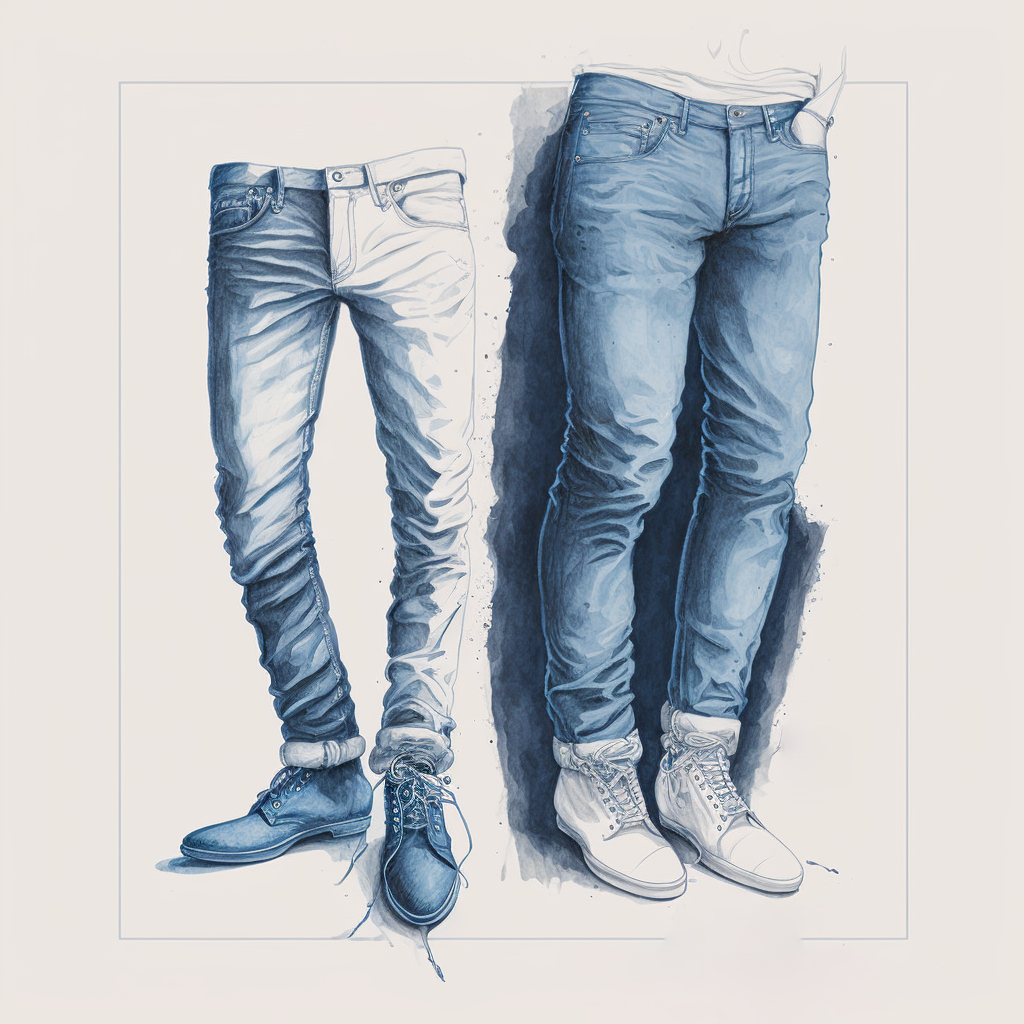Denim is a sturdy cotton twill fabric that has been an integral part of the fashion industry for centuries. Originating from Nîmes, France, denim has undergone numerous transformations over the years to become one of the world’s most recognizable and versatile fabrics.

Denim is made from a combination of cotton, polyester, and spandex, which results in a fabric that is strong, durable, and comfortable to wear. The fabric is usually dyed indigo blue, which gives it its signature deep blue colour, but it can also be found in other colours, such as black, white, and grey, amongst many other colours. The fabric is known for its ability to fade and develop a unique patina over time, making it a popular choice for clothing items meant to look vintage or well-worn.
Denim first became popular in the late 1800s as a fabric for workwear, particularly for workers in the American West. Levi Strauss, a German-American entrepreneur, is credited with developing the first pair of denim jeans in 1873. The jeans were designed for gold miners and cowboys who needed a durable and practical fabric for their work. Over the years, denim has become a staple of casual wear, and today, jeans are one of the most popular clothing items in the world. There are also various cuts and fits within jeans, such as slim and skinny jeans.
In addition to jeans, denim is also used to make a variety of other clothing items, including jackets, skirts, dresses, and overalls. Denim has become a popular choice for designers who are looking to create a casual and comfortable style that can be worn in a variety of different settings. The fabric has also been used in high-end fashion, with designer brands such as Gucci and Prada incorporating denim into their collections.
The popularity of denim has resulted in a number of innovations in the fabric, including the use of different weaves and washes to create unique textures and finishes. Some of the most popular types of denim include raw denim, which has not been treated with any chemicals and will fade and develop a unique patina over time, and pre-washed denim, which has been treated to give it a softer, more broken-in feel.
In recent years, there has been growing concern about the environmental impact of denim production. The process of producing denim requires a significant amount of water, energy, and chemicals, which can have a negative impact on the environment. Many companies have responded to this concern by developing sustainable denim production processes that use less water, energy, and chemicals and by incorporating environmentally friendly materials such as organic cotton into their denim products.
Denim is a versatile and recognizable fabric that has been a fashion industry staple for over a century. From workwear to high-end fashion, denim has been used to create a wide range of clothing items that are both functional and stylish. While there are environmental concerns associated with the production of denim, the industry has responded by developing more sustainable methods of production that aim to minimize the impact on the environment. Whether you’re wearing a pair of jeans or a denim jacket, denim is a fabric that is sure to be a part of our fashion landscape for many years to come.
